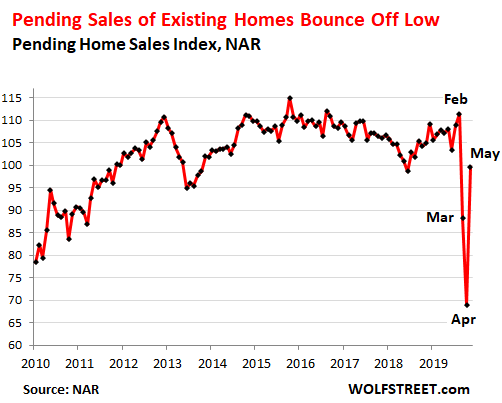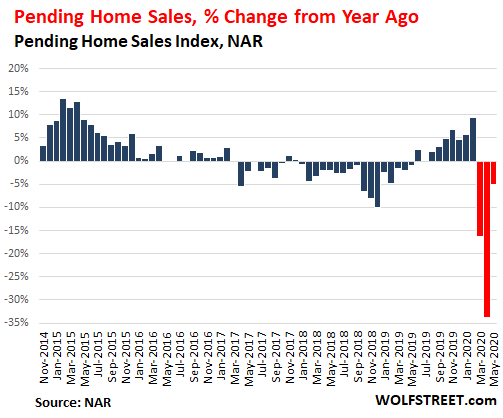
The index of pending sales was set at 100 for the average contract activity in 2001. Pending sales in May are an indication of what closed sales might look like in June and July.
That sales volume collapsed in this historic manner in March and April was a sign that amid the uncertainty, the market had essentially frozen up, with sellers pulling their homes from the market or not listing them in the first place, and buyers staying away in droves.
While many potential sellers still remain reluctant to put their homes on the market, the market is functioning again. The industry has figured out how to deal with the requirements of social distancing, with sellers’ worries about having potentially infected strangers traipse through their home, and with the concerns of everyone else involved in the transaction.
And according to the NAR, “More listings are continuously appearing as the economy reopens, helping with inventory choices.”
The chart below shows the year-over-year percentage change in pending sales. The three months of year-over-year declines during the pandemic – March, April, and May – are marked in red:

In terms of US regions: Pending sales fell in May 2020 compared to May 2019 in three of the four regions:
- Northeast: -33.2% year-over-year to an index level of 61.5.
- Midwest: -1.4% year-over-year to an index level of 98.8.
- South: +1.9% year-over-year to an index level of 125.5.
- West: -2.5% year-over-year to an index level of 89.2.
This market is facing a historic mess...
- Source, The Wolf Street Report, read more here